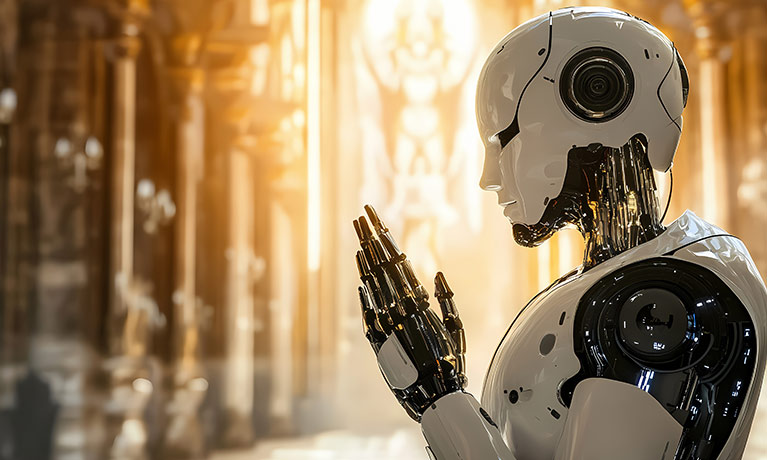How will AI impact religious beliefs and cultural resilience? Generative artificial intelligence (AI) represents a step-change in digital technology and is facilitating transformative change in contemporary cultures and approaches to knowledge and communication across the globe and across the world of faith.
Led by Dr Adam James Fenton [linkedin.com] and the Co-Investigator Dr Chris Shannahan [linkedin.com], the SALIENT Hub [salient-hub.org] research project Cultural Resilience, Religious Faith and the intersection of Generative and Agentic Artificial Intelligence explores the fascinating intersection of AI, religion, and cultural resilience.

They focus on the ways in which the world major religions are responding to AI, the benefits it provides and the challenges it poses to aspects of religious faith, human identity and communal life. They highlight the positive impact that AI is having on aspects of religious life and practice, not least in relation to the engagement with ancient religious texts. They also stress the need to be vigilant to the subtle and subconscious ways that AI can impact on social relations, attitudes, and ways of working. They suggest that there is a need to interrogate AI just as we would any form of knowledge and its relationship to systems of power. AI may provide new ways for religions to connect, to be accessible, but it is fallible. Claims that it speaks in the voice of God are highly debatable and come with considerable risk. AI represents a major innovation in digital technology and has the potential to enhance human life and the practice of faith communities. However, it is vital that it is seen as a means of enhancing human dignity and not diminishing it.
Read the full article here:
Agents, Ghosts, Hallucinations and Ancient Texts: the intersection of AI, religion and cultural resilience in an uncertain world

